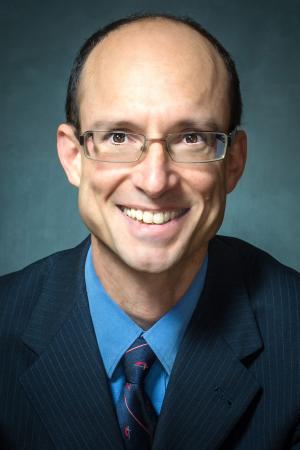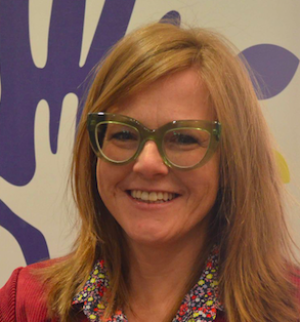Resources

Trauma. Is there any more apt word for the past few years? COVID-19, social distancing, racialized violence, political insurrection—these are just a few of the collective traumas affecting our lives. I’m sure each of us can name additional layers from a personal standpoint, from broken relationships to untimely deaths. So, the need for trauma-informed pedagogical interventions in the classroom seemed uncontestable and urgent when I wrote a small project grant proposal to the Wabash Center in spring 2021. We knew our students were hurting. We were aware of individual trauma histories before social distancing shut down our in-person classrooms. Then COVID hit. Since mid-March 2020, significant portions of our online instruction were dedicated simply to checking in with students, connecting with them emotionally and spiritually, before engaging with them intellectually. Then, George Floyd was murdered by a white police officer in May 2020. Racialized violence hit our students and their communities hard; 35 percent of our student body is African American. We sought trauma-informed pedagogical strategies to help us. The project, “Trauma-Informed Classroom Teaching at Lancaster Theological Seminary,” was intended to equip our faculty with skills, tools, and strategies to optimize the classroom learning experience of students with existing and ongoing trauma histories. I learned that this is no small project. And neither is trauma-informed care reducible to tools and strategies—it involves our whole, embodied selves and the entire community. We began by engaging a Trauma Informed Specialist to provide our faculty a conceptual introduction to trauma and trauma-informed care. This was an easy ask since Lancaster County is committed to becoming a trauma-informed community. In preparation for the workshop, the specialist, Melanie Snyder, invited the seminary to commit to becoming a trauma-informed organization through a program sponsored by her employer, Penn Medicine Lancaster General Health. It was not a good time for Lancaster Seminary to commit to this larger goal. Too much was in flux institutionally, including a combination with Moravian University, for us to look beyond our immediate classroom needs. Snyder’s workshop, “Understanding Trauma, Resilience, and Trauma-Informed Care,” provided a robust introduction for our full-time faculty, some adjuncts, and a select few staff persons. The three hours flew by, equipping us with the basic vocabulary and concepts necessary to talk about trauma. My first inkling that this initiative would not remain confined to the classroom was when someone remarked how valuable the presentation was and asked why the entire staff had not been invited to participate. She was right. Trauma-informed care is a community-wide effort. Our work on classroom pedagogy began in earnest with a workshop by Oluwatomisin (Tomi) Oredein of Brite Divinity School in October 2021. She taught a liberative approach to our individual preparations to create and implement one trauma-informed pedagogical strategy in our classroom during the academic year. We discussed how diverse experiences of race shape the trauma and resilience of individuals. We also examined how we bring our entire, embodied selves to the classroom as instructors, including our racial biases, experiences, and personal trauma histories. As one participant noted, “Trauma-informed pedagogy requires building relationships of trust with students, and to do this, I must be appropriately vulnerable.” Acknowledging our own difficulties over the past two years was essential to this effort. Many faculty, as has been well-document, were suffering their own traumas. As instructors, we had to grapple with “The Truth of These Matters . . . .”: we were worn down, some of us barely hanging on, and we had little bandwidth for innovating, improvising, and implementing new pedagogical strategies. A mid-year listening session with students informed the faculty of some of the struggles students were having and reminded us that we were all in it together. Again we learned that trauma impacts, and trauma-informed care requires, the work of the entire seminary community. During the final workshop of our 18-month initiative, Stephanie Crumpton of McCormick Theological Seminary led us in a discussion of what we had accomplished, areas of growth, and next steps. Individual faculty members had succeeded, to greater or lesser degrees, in testing new trauma-informed pedagogical interventions in the classroom (informed by the resources below). We understood we had a long way to go. Crumpton observed that our faculty had succeeded in become trauma-aware, the first step in becoming trauma-informed, and perhaps even becoming a place of healing centered engagement. The next steps would involve students, staff, and all members of our seminary. We are on a journey from classroom to community. Select Resources on Trauma-Informed Pedagogy Crumpton, Stephanie M. “Trigger Warnings, Covenants of Presence, and More: Cultivating Safe Space for Theological Discussions About Sexual Trauma.” Teaching Theology & Religion 20 (2017): 137–47. Tinklenberg, Jessica L., ed. “Trauma-Informed Pedagogies in the Religious Studies Classroom.” Special Issue, AAR Religious Studies News, Spotlight on Teaching (March 2021). https://rsn.aarweb.org/spotlight-on/teaching/trauma-informed-pedagogies/editors-introduction. Wabash Center Blogs. “Teaching and Traumatic Events” series. (2018). https://www.wabashcenter.wabash.edu/category/teaching-and-traumatic-events/. (See especially posts by Lewis and McGarrah Sharp) Wabash Center Blogs. “Teaching and Learning During Crisis” series. (2020). https://www.wabashcenter.wabash.edu/category/teaching-and-learning-during-crisis/. (See especially posts by Lee, Oredein, Rideau, and Silva-McCormick) Wabash Center’s Podcast Series: Dialogue on Teaching. “When Trauma Touches the Teaching Experience with Dr. Lisa Cataldo.” (2021). https://www.wabashcenter.wabash.edu/resources/trauma-informedteaching/

In striving to craft a trauma-informed pedagogy while teaching about social justice, my reflections have often circled around a central question: When is it appropriate to use tragic and traumatic current events as examples of injustice in the classroom? I’ve been pondering this question for the last few years, while teaching undergraduate courses at a predominately White, Catholic institute. The majority of students take my classes to fulfill a General Education requirement. Most students are from Christian denominations at varying levels of personal faith commitments, and few might elect to take a theology class if it was not required. On the one hand, making connections between course content and the world in which students live is effective. Tethering discussion to an event that every person in the classroom knows about (e.g., the Capitol attack on January 6, 2021) is an attention-grabber. When a well-known event, like the Atlanta spa shootings, affects a particular community more significantly than others—in this case, the AAPI community—discussing it in class signals to students that I take the trauma seriously and care about how they’ve been impacted by it. It can also be time during which my White-identifying students—especially those from predominately White communities—may be more open to learn a much-needed lesson about the reality of White supremacy and White privilege. On the other hand, I worry about retraumatizing students from communities affected by the event. I’ll never forget how a few years ago, after a 2-week unit on racism in my theology and social justice course, a Black male student told me: “I have to think about racism almost every minute in my life. I always have a target on my back. I drive to school with my wallet on the dashboard, just in case I get pulled over. When I get to your classroom, I want a break. I just want to talk about Jesus.” This student did not need me to cater to White students, in trying to convince them that Black lives really do matter. And it clearly added to his trauma when I did. This question of how often to bring traumatic current events into the classroom came to a head while I was teaching about theology and justice this spring, in an undergraduate class entitled “Just Theology.” My class is constructed around several modules, each analyzing a theme of injustice prevalent in US society, through a theological lens. Modules center around topics like poverty, war and weapons, global warming, sexism and patriarchy, racism, immigration, and homophobia and transphobia. My students were predominately White (around 10 to 15 percent BIPOC-identifying) and fairly gender balanced. In my 24-student undergraduate classes usually no more than one student (if that) openly identifies as trans or non-binary. In some classes, I’ve had up to 30 percent disclose to me in written work that they identify as LGBTQ+, but not all are open on campus. This last semester (Spring 2021), I had no shortage of options for bringing current events into our classroom discussions. But I was also deeply aware of how my students were living in a permanent state of instability and uncertainty, due to the COVID-19 pandemic, the Capitol attack, the US-Mexico border crisis, ongoing police brutality and murders, record high unemployment rates, and frequent mass shootings. Introducing students to disorienting dilemmas with conflicting theories and positions, as I usually tried to do in other semesters, almost seemed insensitive in a context already so unstable and polarized over these same issues. After chatting with some colleagues about this struggle, I came to articulate and adopt a pedagogical principle: discussing traumatic events in the classroom, in such an unstable time, necessitates a stabilizing scaffold to frame the events, that is, a theory or intellectual framework that is responsible to course content and objectives.[1] Remembering my former student’s words about wanting to “just talk about Jesus” in my class, I decided to include in my syllabus a piece by Kelly Brown Douglas which makes connections between the stand-your-ground murder of Trayvon Martin and the crucifying murder of Jesus.[2] Of course, in requiring reading like this, appropriate trigger warnings and alternative assignments need to be offered to students, especially during traumatic times. But the reading assignment seemed to help several students connect my class to the world around them in a personal way. By reading, discussing, and writing about Douglas’s connection between Jesus and Trayvon, most of my White students, who needed to, gained some awareness of White supremacy and White privilege. Some of my students of color commented on how they had never been introduced to a liberating reading of Jesus and appreciated this one that connected deeply to their current everyday struggles. The piece provided nearly all of the students a concept to evaluate—a stabilizing intellectual scaffold around which to consider disorienting and nonsensical tragedies and traumas. Teaching through 2020 and 2021 has been difficult, to be sure, but my students helped me to see how many of them necessitate and yearn for critical thought even more during times of tragedy, uncertainty, and trauma. [1] I am particularly grateful to my colleague and conversation partner, Dr. Kristi Law, Director of the Bachelor of Social Work program and Associate Professor at St. Ambrose University, for helping me think through this idea. [2] Kelly Brown Douglas, “Jesus and Trayvon: The Justice of God,” in Stand your Ground: Black Bodies and the Justice of God (Maryknoll, NY: Orbis, 2015), 171-203.